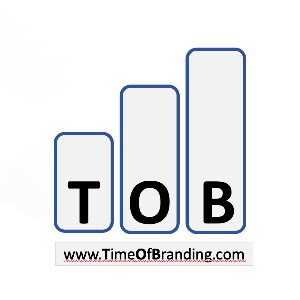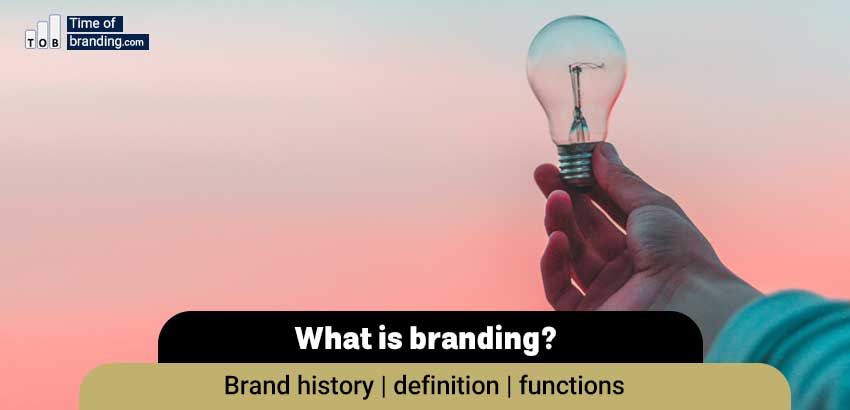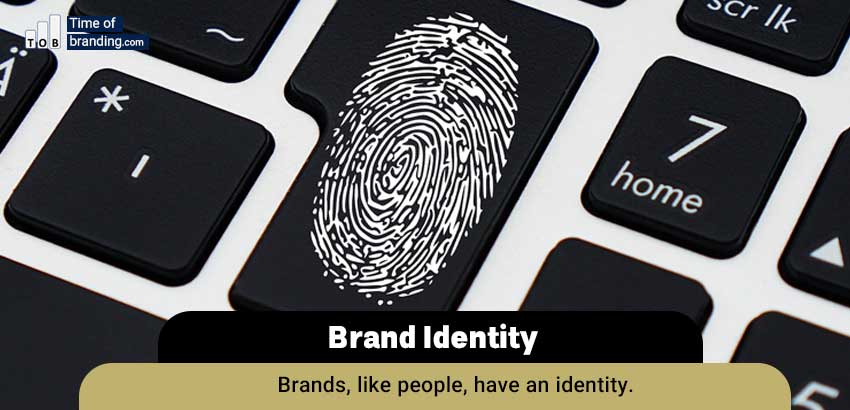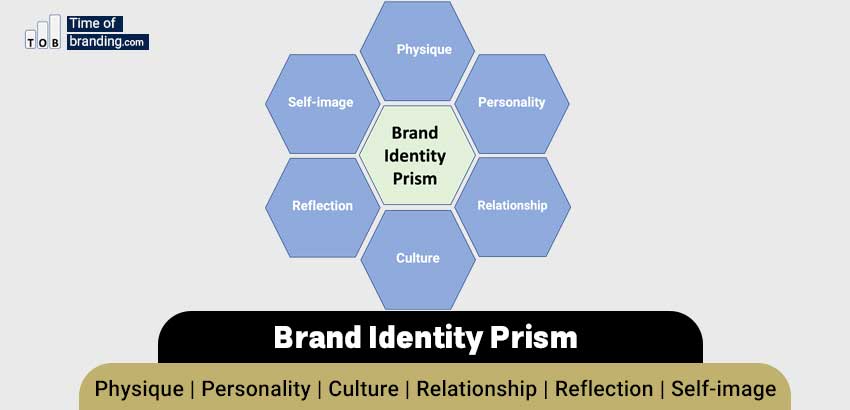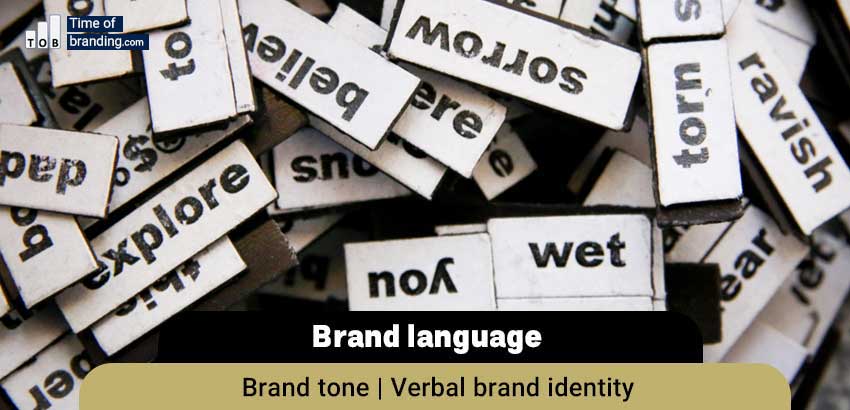We are surrounded by brands.
When we talk about brands, we do not mean just big international brands like Apple, Amazon, Google and Coca-Cola, but also smaller national and local brands. Brands that are competing to have a bigger share in our portfolio.
In the first step of branding (Roadmap for how branding is done) we want to answer this question: “what is a branding”
The presence of brands in our lives is so serious and pervasive that it can be said that many of our purchasing decisions are focused not on the product, but on the product brand.
Suppose you want to make your purchase from the supermarket over the phone. From yogurt and bread to batteries and toothbrushes, and usually for each product you tell the seller your desired brand.
There are few products whose brand is not important to you and just say the name of the product. For example, maybe: Socks or Garbage bag
Of course, we also know that the issue of branding is not limited to goods, and branding concerns include almost everything that can be provided:
- service providers seek to build a brand for their services
- websites and applications spend to strengthen their brand
- municipalities Cities strive to define and strengthen the brand
- and many people strive to develop their personal brand.
Therefore, it can be said that today, the scope of brand knowledge and branding has become very wide, and everyone in any field of management and business, at least should be familiar with the basics of this knowledge.
Brand history
Apparently, the word brand is taken from an old word in the language of the Scandinavian people. They use the word Brandr to burn the skins of their animals. This word, which also means fire, is probably the same root as Burn, meaning to burn.
So it can be said that the first function and concept of the brand was differentiation.
It means that by marking his livestock, a rancher distinguished them from the livestock of others.
If we accept this narrative, we must say that the original meaning of the brand is very close to what we know today as a trademark.
There are still many people who use the term brand in the same old sense:
When someone starts a new business or launches a new product, they have simply chosen a brand name for their work or product. But they usually mistakenly say at this stage: “I have created a new brand”.
But the concept of brand changed over time and gradually, this word was used with new meanings.
Sometimes the term brand has been used to specify superior and special products (for example, when we say that guy wears brand clothes). Sometimes, the brand is considered as a promise (for example, Toyota means quality at a reasonable price).
Some have used the brand as values beyond the product’s primary function (I don’t wear a Rolex watch to tell the time. I wear it for the prestige. Or I bought these socks from a brand that supports orphaned children. Or this brand, because it is environmentally friendly).
Sometimes the brand is also used as a symbol of a group
In short, different writers and thinkers have attributed various concepts to the brand and each one has presented the definition of the brand in a different way.
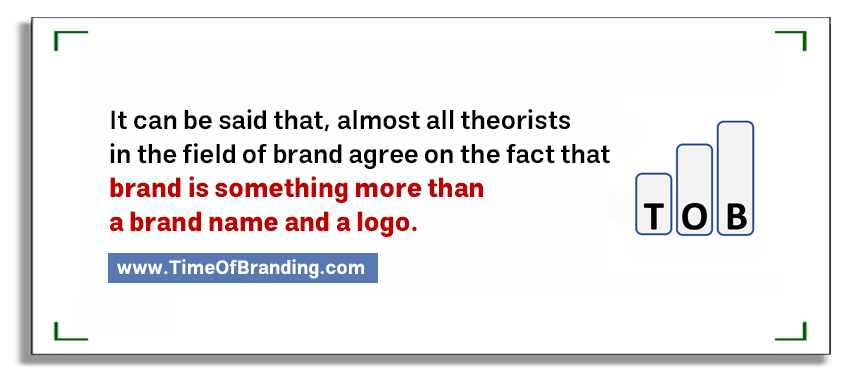
It can be said that almost all theorists in the field of brand agree on the fact that brand is something more than a brand name and a logo.
But this is their only point of agreement and when you ask them what is the definition of a brand, at this stage they cannot agree with each other.
What is the definition of brand?
With the description provided, it is not really possible to define the brand. Whatever definition you give, some will be satisfied and some will be dissatisfied.
Therefore, among the multitude of definitions presented, we have selected and present a few that are useful to us and will be used in future lessons.
So we emphasize that when we use the term brand, we mean these definitions:
Brand means a promise
(Source: “From Brand Vision to Brand Evaluation” Book)
Brand is a promise for many of us. A brand promise may be quality. Another promise, the lowest price. The promise of winning a brand may also be prestige.
Promises can be divided into three categories:
- Performance promises
- Emotional promises
- The promise of experience
For example, BMW promises its customers that they will experience the ultimate driving pleasure, or Lego promises its audience that they will experience endless play.
Of course, the promise is not going to be officially announced in the form of a slogan. A promise is something that is formed in your mind.
For example, think about McDonald’s promise. McDonald’s promise is not of excitement and feelings and amazing experience. Rather, it is a definite functional meal: a meal of reasonable quality at an acceptable price. Food that you know the taste of and will not taste foreign even in the most foreign lands.
A brand means an association of meanings
(Source: “Kellogg on Branding in a Hyper-Connected World” Book)
When you see or hear the word Apple, what words come to mind? Maybe innovation, simplicity and design.
What words come to mind when you hear the word Caterpillar? Maybe making a way and being hardworking
What words come to mind when you hear the word Trump?
The difference between a brand and an ordinary word or brand name is that when you encounter a brand, a set of words and concepts are associated with you. While an ordinary word does not evoke anything beyond itself.
Brand is the image in the customer’s mind
(Source: “Strategic Brand Management” Book)
Brand means all the images, experiences and perceptions that are formed in the mind of a customer regarding a name or a commercial symbol.
So, you can’t ask the manager of a brand or the CEO of an organization what is your “brand identity”? Or what is your “brand promise”? Or what are your “brand associations”?
Rather, it is the customer and the audience who has the right to answer these questions.
Works, efforts, planning, advertising and everything that a business does are just inputs to the branding process. But the output of branding, that is, what is called a brand, is formed in the mind of the customer.
As you may have noticed, these apparently different definitions have almost the same message: the brand makes sense in the minds of customers.
If someone says they are trying to build a brand, they are actually trying to change “something” in the minds of their customers and audiences about themselves or their product or their organization.
Now you can call this “thing” promise or association or accumulated experience or any other word that is easier for you to understand.
What functions does the brand have?
A brand can be a differentiation tool and differentiate a person/organization/product from its competitors. This distinction can reduce the risk of the audience/customer.
Suppose you want to buy a camera. Dozens of companies are launching their products. You can spend hours and days searching and comparing the products of all of them and finally buy one.
But you can rely on the top two or three brands on the market (eg Nikon, Canon, and Sony) and only see their products.
By doing this, you have reduced the risk of your purchase. The owner of the brand has also obtained the material benefit of his brand.
The brand can also become a tool for self-expression and self-confirmation. We choose many brands to show that we belong to a certain tribe (= we don’t belong to several other tribes). Therefore, an animal lover may not buy their cosmetics from a brand that tests on animals. And this is why you choose one among hundreds of charities and leave others aside. Your discussion is not just about helping. You choose a brand that aligns with your principles and values and reflects your concerns.
Brand can build trust. When a customer or audience knows a brand’s promise, they do less research and make a decision faster. Has a Benz buyer ever asked the salesperson or another buyer, “On uphill roads,
Does the air conditioner of this car work well?
This function of the brand is called creating a shortcut. That is, a strong brand solves and answers many of the audience’s questions from the very beginning, and the audience can finalize their purchase decision much faster and easier.
Edward Burke, one of the managers of Johnson & Johnson, defines the brand as
The net value of the total trust that has been formed in the mind of the customer towards us as a result of our marketing activities from the past to this moment.
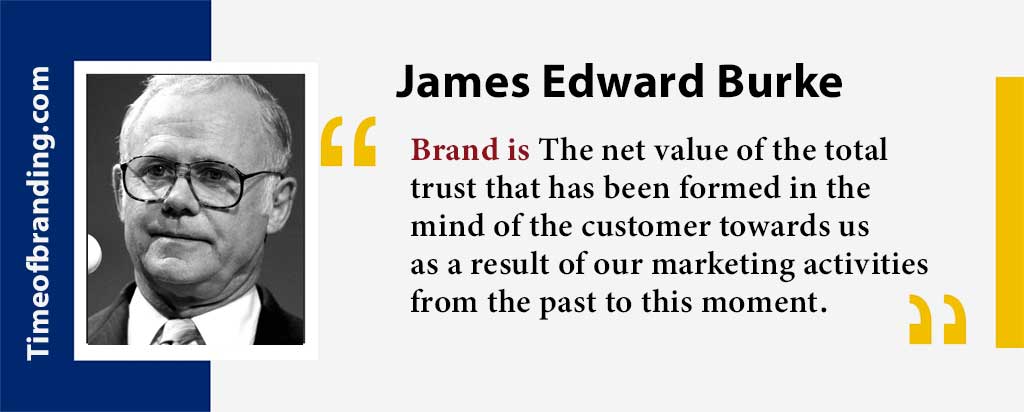
Finally, it can be said that a strong brand is useful for both the brand owner and the customer.
For the brand owner, the brand becomes a competitive advantage and creates economic value. For the customer, it becomes a tool that makes selection and decision-making faster and easier and reduces risks and worries.
Are brands always popular?
It can be said that the brand has a general meaning and a specific meaning.
In a general sense, whenever associations are formed around a name or symbol, that name or symbol has become a brand. In other words, in a general sense, it can be said that the name of a big fraudster or a serial killer can also be a brand.
But in a special sense, a brand is usually used for a name or symbol that is popular and respected.
When a restaurant manager says that we have now become a brand, he usually means that a popular and trusted brand has been formed as a result of their efforts.
Of course, in many cases, brands are a combination of positive and negative associations. For example, maybe Coca-Cola evokes two promises of “pleasure of drinking” and “obesity and disease” for you at the same time.
In general, we must say that when we talk about brand and branding, we usually mean that efforts, plans and activities are done with the aim of gaining respect and credibility for a brand.
Branding is a subcategory of what science?
Branding is usually considered a subset of marketing management.
Undoubtedly, marketing knowledge and especially integrated marketing communication can play an important role in branding. But we must remember that in the real world, branding goes far beyond marketing activities.
For example, a wrong decision in the area of strategy can easily destroy a large part of the efforts of the marketing unit. Also, if the human resources unit is indifferent to the brand of the organization, it may attract and hire those who are not aligned with the principles and values of the organization and their presence will harm the brand of the group.
In general, we can say that branding can be successful when each person in the organization always remembers that each of their decisions and behaviors affects the brand of the organization.

The same issue is also relevant in personal branding. Personal branding is not a part-time job either. That is, no one can say that I work ten hours a day and out of these ten hours, I devote one hour to personal branding.
All the activities and decisions and behaviors of these ten hours (and of course the other fourteen hours) are related to branding. Each of them can improve or weaken the individual’s brand in the mind of the audience.
